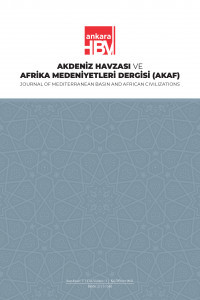THE IMAGE OF ETHIOPIA IN THE CHINESE MEDIA: A CASE STUDY OF CHINA GLOBAL TELEVISION NETWORK
The relationship between Ethiopia and China dates back in 1970s.The two countries, under the Sino-Africa relationship have mutually benefitted. Despite the long dated friendship, it is surprising how a number of Chinese have little or no idea about Ethiopia or its citizens whilst the situation is different with Ethiopians. Therefore, this study checked how China portrayed Ethiopia in media reporting and the image formed about Ethiopia and Ethiopians. Again, China, like the African Continent has suffered bad image representation by the Western media, thus, it is committed to the implementation of the New World Information Communication Order (NWICO), which would give voice to the voiceless by changing how Africa has been represented. Thus, the research compared the International Chinese media, particularly, China Global Television Network on how it portrayed Ethiopia’s public image not only in China but the world as a whole. The research was guided by three research questions which included how is the image of Ethiopia portrayed by Chinese media? What are the major themes that are presented in Chinese media? And what kind of frames the media used to narrate stories about Ethiopia? Anchored to media framing theory and using content analysis the researcher reviewed stories that were broadcasted about Ethiopia for the period of two years that is 2015 and 2016 on Chinese mainstream media, China Global Television Network. It employs both qualitative and quantitative method. The study showed that the image of Ethiopia in Chinese media is a favorable. Most of the news items were positive which focuses on strengthen a cordial relationship between the two countries. The study also found out that the economic theme is the most dominant theme where Ethiopia is viewed as an economic power and an important player in African economic growth and international business. That means development, business, trade and other economic related stories has a lot of space in CGTN. Political theme takes the second slot on China Global Television Network portrayal of Ethiopia.
Anahtar Kelimeler:
Media image, Media framing, CGTN, China, Ethiopia
___
- Bettina Fabos (2006) Media and Culture. New York: Bedford 6th Edition.
- Dahinden, U., Bonfadelli, H., &Leonarz, M. (2002). Biotechnology in Switzerland: high on the public agenda,but only moderate support. Public Understanding of Science, 11, 113-130.
- De Vreese, C. H. (2005). News framing: Theory and typology. Information design journal+ document design, 13(1), 51-62.
- E.Goffman (1986) Frame Analysis : An essay on the organization of experience
- Entman, R. (1993) Framing: toward clarification of a fractured paradigm. Journal of Communication 43(4), pp. 51–58.
- Gamson W. A. & Modigliani A. (1987).Media discourse and public opinion on nuclear power: A constructionist approach. American Journal of Sociology (95), 1-37.
- Giflin, T. (1960). Political Orientation of Journalists. Chicago: Volunteer Publishers.
- Hanauer, L., & Morris, L. J. (2014). Chinese Engagement in Africa. The, R. (2010). The Impact of China-Africa Trade, (7).
- Higgins, E. T., &Kruglanski, A. W. (Eds.). (1996). Social psychology: Handbook of basic principles. New York: Guilford Press. Jim A. Kuypers (2009) Rhetorical Criticism: Perspectives in Action (Lexington Books,)
- Kunczik, M. (1997). Images of nations and international public relations. Mahwah, NJ: Lawrence Erlbaum As-sociates Publishers
- Lang, G. L. (1984). Frames structure Reality. Burmingham: Sage Publications.
- Mc Combs M. and Shaw D. (1972). The Agenda-Setting Function of Mass Media, 176 -187
- McCombs, M. (2003). The Agenda-Setting Role of the Mass Media in the Shaping of Public Opinion. University of Texas at Austin. Retrieved November10,2014
- McCombs, M. E. (2004). Setting the Agenda: The Mass Media and Public Opinion.
- McQuail, D. (2005). McQuail's Mass Communication Theory. (5th edition). London
- Moeller, S. D. (1999). The Four Habits of International News Reporting. New York: Publishing House.
- Mutingwina, S. (2013). The Representation of Africa on CCTV Africa: Constructive Journalism as a New Para-digm.
- Richard Campbell(2006). An Introduction to Mass Communication: 9th edition,(p.45-98)
- Semetko H.A. &Valkenburg P.M (2000).“Framing European Politics: A Content Analysis of Press and Televi-sion News. Journal of Communication. 93-109
- Shinn, David H. (2014). Ethiopia and China: How Two Former Empires Connected?
- Strange A. et al (2013, April). China’s Development Finance to Africa: A Media-Based Approach to Data Collection. Working Paper 323. Center for Global Development. Retrieved January 20, 2015
- Taylor, S. T. (1991). Social Cognition. New York: MacGraw Hill.
- Tuchman, G. (1978). Making news: a study in the construction of reality. New York: The Free Press.
- Tuchman, G. (1978). Making news: a study in the construction of reality. New York: The Free Press.
- Wang, J. (2008). The power and limits of branding in national image communication in global society. Journal of International Communication
- Wekesa, B. (2015). China Journalism frames in positive . London
- Xiufang Leah, L. I. (2012). Images of China: A comparative framing analysis of Australian current affairs pro-gramming.
- Zenlinsky, E. A. (2005). Do tax expenditures create framing effects. Virginia: Firefighters Publihers.
- ISSN: 2717-7548
- Yayın Aralığı: Yılda 2 Sayı
- Başlangıç: 2019
- Yayıncı: Ankara Hacı Bayram Veli Üniversitesi
Sayıdaki Diğer Makaleler
Lukman Adewale QUADRI, Ajibola OLADEJO
Cyber Theatre: a fifth domain of international politics
Lukman Adewale QUADRI, Monsuru Olaitan RASAQ
21. YÜZYILDA AFRİKA BOYNUZU'NUN ULUSLARARASI POLİTİKADA ÖNEMİ
THE ROLE OF THE CIVIL SOCIETY IN CONFLICTS: THE ANGLO-PHONE CRISIS IN CAMEROON
Victor MOİNİNA, Anne Paule NGOH
"UZAKTAKİ KARDEŞİME" ÇEVİRİDE DİLBİLİMSEL VE KÜLTÜREL YÖNLER
Aygul ALPYSBAYEVA, Svetlana ASHİMKHANOVA
THE ROLE OF NGOS MANAGING DOMESTIC VIOLENCE IN SUB-SAHARAN AFRICA; USING THE CASE OF NIGERIA
ÖMER DERYA BEY'İN ESTERGON FETİHNAMESİ
Yakup POYRAZ, Semanur BAYRAKTAR
AFRİKA’NIN EKONOMİK BÜTÜNLEŞMESİNE GİDEN YOL: AFRİKA KITASAL SERBEST TICARET ANTLAŞMASI
